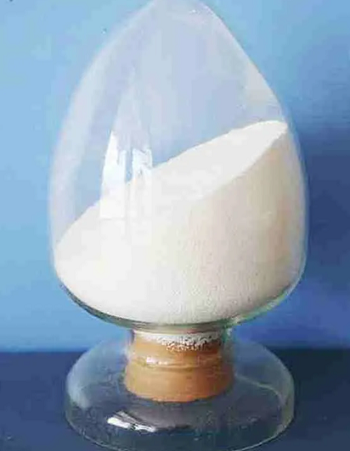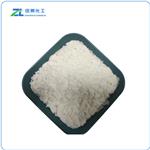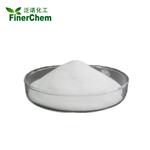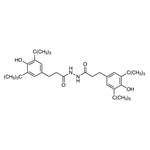FDA approve antioxidant 1024 usage in packaging polymers, resins, and adhesives intended for food contact applications. It is approved in many countries for food contact applications.
FDA approve antioxidant 1024 usage in packaging polymers, resins, and adhesives intended for food contact applications. It is approved in many countries for food contact applications.
Antioxidant 1024, white to slightly yellowish crystalline powder, is a non-staining, high molecular weight, hindered phenolic antioxidant and metal deactivator. It improves properties in polymers exposed to sour gasoline. It offers antioxidant protection in immersion, dry-out and ageing testing due to its good extraction resistance in fuels and oils. In this grade, the metal deactivating functions provide better end-use heat and light stability by deactivating metal catalyst residues in polyolefins and polymers. Antioxidant 1024, when combined with Antioxidants 58 and 60, enhances the heat resistance and metal deactivation properties. It finds application in EPDM, crosslinked polyethylene, nylon, polyacetal and nitrile polymers. The recommended dosage level in plastic is 0.02-0.50%, and in rubber, it is 2 phr by weight.

Antioxidant 1024 is used in conjunction with phenolic antioxidants, phosphites/phosphonites, thio-synergists and other co-additives.
Most suited for PA, PE, rubbers and PP applications. More efficient if it is added to the polymeric substance used in insulated electric wire and cable. Also it’s perfect melting nature makes it easily to mix with and into the substance mentioned above and other polymeric substance system without any dispersing problem.
1. Synthesis steps of β-(3,5-di-tert-butyl-4-hydroxyphenyl) propionyl hydrazide
(1) Dissolve 54 g of hydrazine hydrate in 600 mL of a mixed solution of methanol and ethanol (V methanol: V ethanol = 1:2), then transfer to a dry three-necked flask, and then add 76 g of β-(3, 5-di-tert-butyl-4-hydroxyphenyl) methyl propionate, the three-necked flask is fixed on the iron stand, the ultrasonic time is 10min at room temperature, the intensity is 50KHz, and then the stirrer is placed, and at room temperature , Stir and react for 12h in a nitrogen protected environment, and wait until the reaction liquid is white and viscous;
(2) The white viscous reaction liquid obtained in step (1) is subjected to vacuum distillation. When a large amount of solids are deposited, the vacuum distillation is stopped, and then water is added to the reaction flask and stirred, that is, white crystals are deposited. After suction filtration , Recrystallize with n-hexane to obtain pure β-(3,5-di-tert-butyl-4-hydroxyphenyl) propionyl hydrazide.
2. The synthesis steps of antioxidant 1024
(1) First, add 18 g of anhydrous β-(3,5-di-tert-butyl-4-hydroxyphenyl) propionyl hydrazide, 10 g of ethyl acetoacetate, and 75 mL of dehydrated methanol and toluene into a three-necked flask. Solution (V methanol:V toluene=1:80), then add the rotor, and fix the thermometer, reflux condenser and nitrogen protection device on the three-necked flask;
(2) Place the three-necked flask containing the reactants in step (1) in an oil bath to slowly raise the temperature, and stop the reaction after reacting for 3 hours at 85°C;
(3) Cool the reaction solution of step (2) until crystals are precipitated, and then continue to drop to room temperature until the crystals are completely precipitated, and then perform suction filtration to obtain crystals. Wash the obtained crystals with water 3 times, and then use 5% hydrochloric acid Rinse, finally wash with water to neutrality, filter, and dry to obtain the final product Antioxidant 1024.




